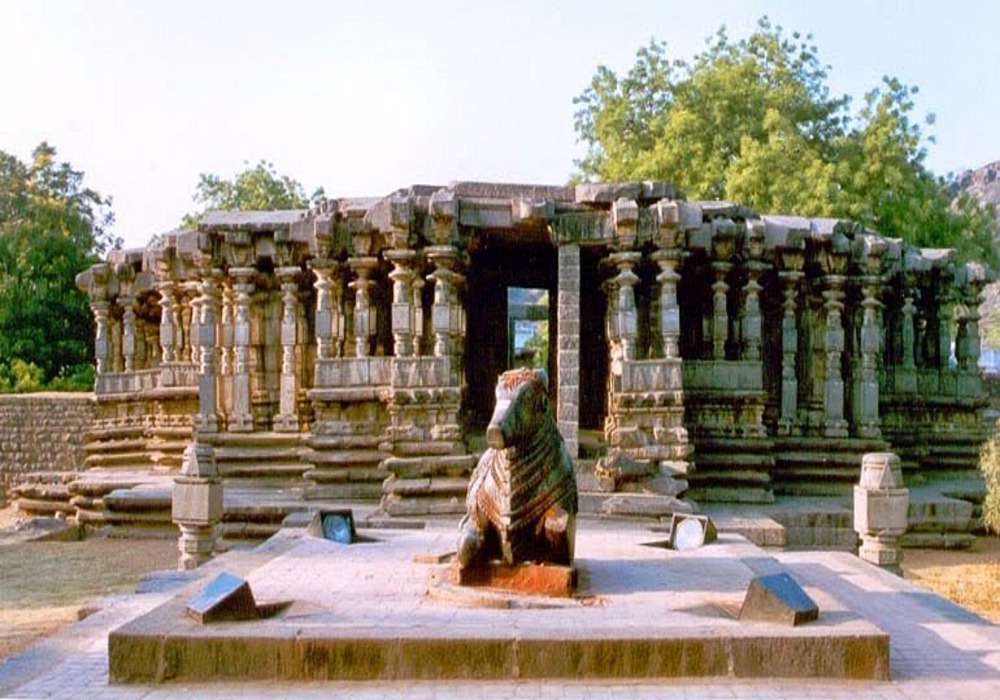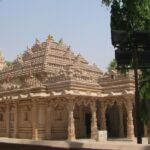The Thousand Pillar Temple, also known as Rudreshwara Swamy Temple, temple located in Hanamkonda, Telangana, India. It is one of the most magnificent examples of ancient Indian architecture and a major tourist attraction in the region.
History and Architecture of Thousand Pillar Temple:
The Thousand Pillar Temple was constructed during the Kakatiya dynasty in the 12th century by the ruler Rudra Deva. The temple is dedicated to three Hindu deities: Lord Shiva, Lord Vishnu, and Lord Surya. The temple was constructed using granite stones, and it took about 72 years to complete the entire structure.
The temple’s architecture is a blend of several styles, including Chalukyan, Hoysala, and Kakatiya. The temple’s main hall is supported by 1,000 pillars, which gives the temple its name. Each of these pillars is intricately carved with images of gods, goddesses, and mythological creatures. The temple’s ceilings are also adorned with exquisite carvings and sculptures.
One of the main attractions of the temple is the large monolithic Nandi bull statue, which is carved out of a single piece of black basalt stone. The statue is about 15 feet long and 8 feet tall and is considered one of the largest of its kind in India.
Significance of Thousand Pillar Temple:
The Thousand Pillar Temple is not just a magnificent piece of architecture; it also holds great religious significance for Hindus. The temple is believed to be one of the most sacred pilgrimage sites in the region, and many devotees visit the temple every year to offer their prayers and seek blessings.
Apart from its religious significance, the temple is also an important cultural landmark in the region. The intricate carvings and sculptures in the temple reflect the artistic and cultural traditions of ancient India.
Entry Fee– Free
How to Reach the Thousand Pillar Temple
The Thousand Pillar Temple is located within the Warangal Fort complex and can be easily reached by road. Here are some ways to reach them:
By Car/Taxi: Visitors can hire a taxi or rent a car to reach the temple. The temple is located around 2 km away from the Warangal railway station and can be reached in approximately 10 minutes by car.
By Bus: There are several local buses that run from the Warangal bus station to the temple. Visitors can take any bus that goes to the Hanamkonda bus station and then take a connecting bus or an auto-rickshaw to the temple.
By Auto-rickshaw: Auto-rickshaws are readily available in Warangal, and visitors can hire one to reach the temple. The distance from the Warangal railway station to the temple is approximately 2 km, and the fare should be around INR 30-50.
It is recommended to confirm the directions and fares with the driver before starting the journey to avoid any confusion later. Additionally, it is advisable to visit the temple during the early morning or evening hours to avoid the heat of the day, especially during the summer months.
Tourism and Conservation:
The Thousand Pillar Temple is a major tourist attraction in the region, and it attracts thousands of visitors every year. The temple is open to visitors every day, and there is no entry fee.
However, due to its age and the effects of weathering, the temple is in need of conservation and restoration. The government of Telangana has taken steps to preserve the temple’s heritage and has allocated funds for its restoration.
Nearest Places to Visit
- Warangal Fort: A magnificent warangal fort that dates back to the 13th century, with stunning architecture and beautiful gardens.
- Kakatiya Rock Garden: A picturesque garden that features stunning rock formations and beautiful waterfalls.
- Bhadrakali Temple: The Bhadrakali Temple is a famous Hindu temple located about 4 km from the Padmakshi Temple. An ancient temple dedicated to the Hindu goddess Bhadrakali, with beautiful architecture and serene surroundings.
Conclusion:
The Thousand Pillar Temple is a magnificent example of ancient Indian architecture and a significant religious and cultural landmark in the region. Its intricate carvings, sculptures, and monolithic Nandi bull statue are a testament to the artistic and cultural traditions of ancient India. The temple’s conservation and restoration efforts are essential to preserving its heritage and ensuring that it remains a symbol of India’s rich cultural legacy for generations to come.



